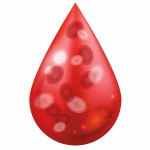Treating hepatitis C virus among those with HIV and decompensated cirrhosis can lead to good but not great hep C cure rates. HCV treatment success rates are better when people with HIV have compensated cirrhosis, the milder form of the disease, or do not have cirrhosis.
Researchers studied data from the MADRID-CoRe prospective registry of HIV/HCV-positive adults receiving direct-acting antiviral treatment for hep C in hospitals of the Madrid Regional Health Services.
Findings were presented at the 2017 Conference on Retroviruses and Opportunistic Infections (CROI) in Seattle.
Members of the study cohort were considered to have decompensated cirrhosis if they had Child Pugh stage B or C liver disease or had a current or prior diagnosis of decompensated cirrhosis or hepatocellular carcinoma (HCC, the most common form of liver cancer).
Between November 2014 and August 2016, 2,662 people in the registry who had HIV and HCV were scheduled to finish treatment by May 31, 2016. Among them, 54.6 percent did not have cirrhosis, 37.7 percent had compensated cirrhosis, 7.5 percent had decompensated cirrhosis and 0.3 percent had liver disease of unknown severity.
Of the 146 people with decompensated cirrhosis, 69.9 percent were male, the median age was 51.6, 85.6 percent were on antiretroviral treatment for HIV and 60.3 percent had not been treated for HCV before. One person had had a liver transplant (0.7 percent), seven were on a transplant waiting list (5.8 percent) and 15 had liver cancer (10.3 percent).
Broken down by genotype, 33.6 percent of those with decompensated cirrhosis had genotype 1a, 21.9 percent had genotype 1b, 15.1 percent had genotype 3, 20.6 percent had genotype 4 and 8.9 percent had other genotypes. They were treated with Harvoni (ledipasvir/sofosbuvir) (50 percent); Sovaldi (sofosbuvir) and Daklinza (daclatasvir) (24.7 percent); Sovaldi and Olysio (simeprevir) (17.8 percent); Sovaldi and ribavirin (4.8 percent), Viekira Pak (ombitasvir/paritaprevir/ritonavir; dasabuvir) (2.1 percent); and Olysio and Daklinza (0.7 percent). A total of 47.3 percent of them were treated with ribavirin.
A total of 118 of the 146 people with decompensated cirrhosis achieved a sustained virologic response 12 weeks after completing therapy (SVR12, considered a cure), for a cure rate of 80.8 percent. By comparison, 91.2 percent of those with compensated cirrhosis were cured, as were 93.5 percent of those without cirrhosis. The differences between the decompensated cirrhosis cure rate and both the compensated cirrhosis and non-cirrhosis cure rates were statistically significant, meaning it is unlikely the differences were the result of chance; however, the difference between the latter two cure rates was not statistically significant, meaning it could have occurred by chance.
Of those with decompensated cirrhosis, 11.6 percent experienced viral relapse, 3.4 percent died, 1.4 percent stopped treatment because of adverse health events, 0.7 percent had a breakthrough infection and 2.1 percent stopped treatment for other reasons.
Among those with decompensated cirrhosis, being female was associated with a 71 percent reduced likelihood of treatment failure compared with being male; compared with having Child Pugh A liver disease, having Child Pugh C liver disease was associated with a 9.4-fold increased likelihood of treatment failure. Treatment success rates did not differ significantly according to genotype, treatment regimen or whether individuals had been treated for HCV before.
To read the conference abstract, click here.







Comments
Comments